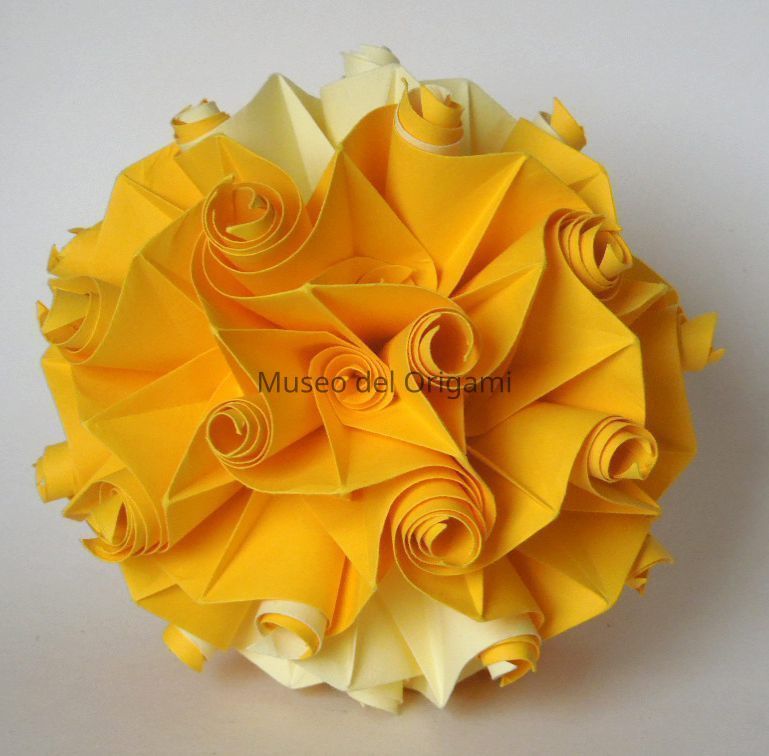Name/Title
(C) - Burczyk, Krystyna and Wojtek (Poland) - Twirl – RhombusesEntry/Object ID
2016.6.3Description
60 pieces of tracing paper, assembled without glue.
About the technique:
Modular Origami is a paper folding technique in which several or many sheets of paper are first folded into individual modules or units and then assembled into an integrated flat shape or three-dimensional structure, usually by inserting flaps into pockets created by the folding process.Artwork Details
Medium
Tracing paper, paintedContext
Between 2012 and 2016, this model went on a four-year journey with "Folding Paper: The Infinite Possibilities of Origami". Organized by International Arts & Artists, it became one of its most successful traveling exhibitions, welcomed by museums and libraries across the United States.To build on the legacy of the project, co-curator Meher McArthur proposed that, at the end of the tour, a version of it find a permanent home at the Museo del Origami, which, at that time, was still under construction in Uruguay. As a result, many of the works from the exhibition were generously donated by the artists and became the foundation of the museum’s collection.Made/Created
Artist Information
Artist
Burczyk, KrystynaRole
Designer and folderArtist
Burczyk, WojtekRole
Designer and folderDate made
2009Notes
About the artists:
Krystina Buczyk (b. 1959, Polish) mathematics professor, started folding paper in 1995, delving into the connection between origami and math through geometric models. She is particularly interested in origami's educational potential in mathematics and, together with her husband, has authored several books on the subject.
Wojtek Burczyk (b. 1960, Polish). With a background in mathematics and computer science, he began exploring origami the same year as Krystina. The couple active promotes origami in Poland and take part in national and international exhibitions.
(Source: Meher McArthur and Robert Lang, Folding Paper: The Infinite Possibilities of Origami (Washington, D.C.: International Arts & Artists, 2011), ISBN 978-0-9662859-6-3)Dimensions
Height
11 cmWidth
11 cmDepth
11 cmResearch Notes
Research Type
ResearcherPerson
Rozenberg, LauraDate
2025Notes
On Modulars - Source: Mukerji, Meenakshi, 2009. Ornamental origami: exploring 3D geomentric designs. Wellesley, Mass: AK Peters. ISBN 978-1-56881-445-2
